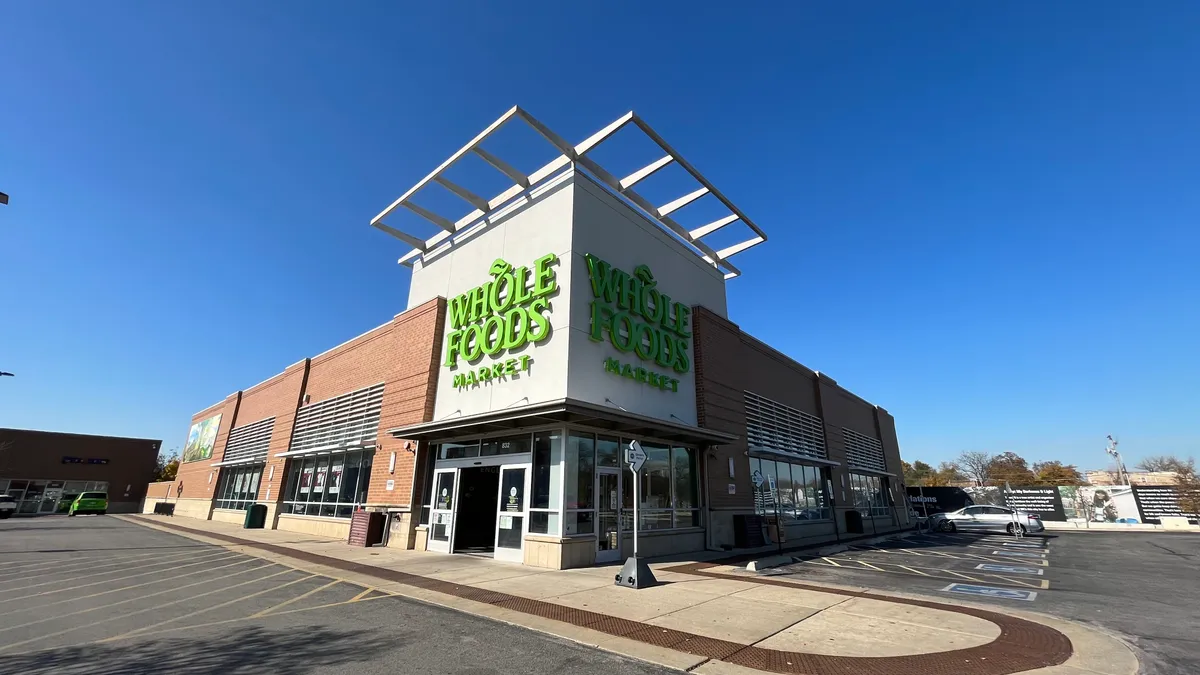Dive Brief:
- Whole Foods Market is reducing its operating regions from nine to six and streamlining the organization of parts of its global and regional support teams, according to a company memo sent to employees Thursday.
- As a result of the restructuring, Whole Foods is laying off several hundred corporate employees, The Wall Street Journal reported. Layoffs will impact less than half a percent of the company’s global workforce, a spokesperson for the company said, noting that workers in the company’s stores and distribution centers are not included in the layoffs.
- The changes at the specialty grocer come as parent company Amazon as well as others have carried out layoffs as the threat of a recession looms.
Dive Insight:
In its memo to employees, Whole Foods characterized its restructuring moves as a way to simplify its work and operate more effectively.
“As the grocery industry continues to rapidly evolve, and as we — like all retailers — have navigated challenges like the COVID-19 pandemic and continued economic uncertainty, it has become clear that we need to continue to build on these changes,” the memo read. “With additional adjustments, we will be able to further simplify our operations, make processes easier, and improve how we support our stores.”
In addition to slashing its operating regions, Whole Foods is centralizing some of the units within its operations division. Support for the company’s category-specific store operations will transition from a regional structure to a team within global operations. Whole Foods will also shift supply chain management work from a regional support structure to a new team within its global supply chain division.
In addition, Whole Foods said it is making additional adjustments to its global support teams and “enhancing” its team member services division. It expects the overall reorganization process to last two months.
“We are confident these changes will allow us to better support our stores, Team Members, and suppliers, elevate the customer experience, and position Whole Foods Market for continued growth,” the company stated.
Whole Foods has consolidated its operations over the past several years as it has expanded and grappled with the complexities of being a large-scale specialty business. In 2021, the company announced plans to merge its global and regional merchandising teams and create new leadership roles for local products and supplier relationships.
Amid these changes, Whole Foods has continued to open stores across the country — growth that should continue well into the future. The spokesperson said it currently has around 50 stores in development, and that it aims to eventually have a pipeline of around 100 stores, with 30 or more locations opening annually.
Parent company Amazon, meanwhile, has struggled to get a handle on its grocery business, having recently paused the expansion of its Amazon Fresh chain as it fine-tunes its approach. In his recent letter to shareholders, Amazon CEO Andy Jassy said grocery remains a “big growth opportunity” for the company, and noted that scaling physical stores is critical to its success in the $800 billion business.
Amazon recently announced plans to cut more than 25,000 jobs as it adjusts from booming demand during the height of the pandemic. Walmart has also recently announced hundreds of job cuts at its fulfillment centers, while discount grocer Lidl recently laid off around 200 corporate employees.















